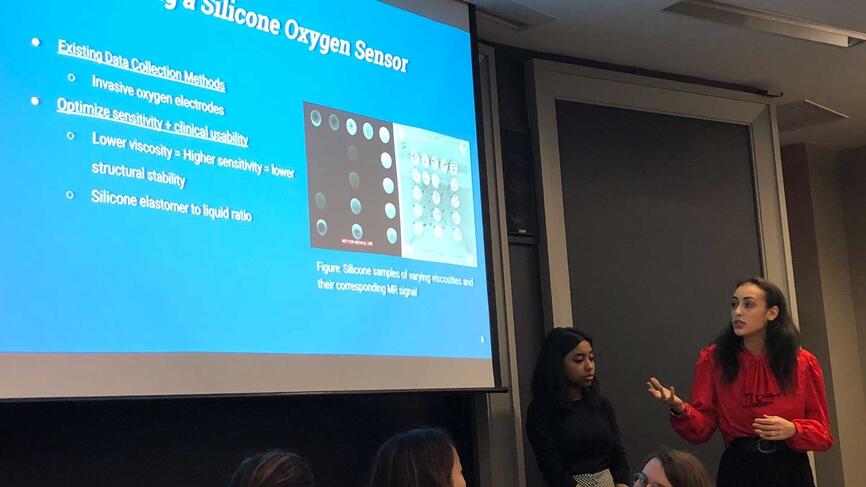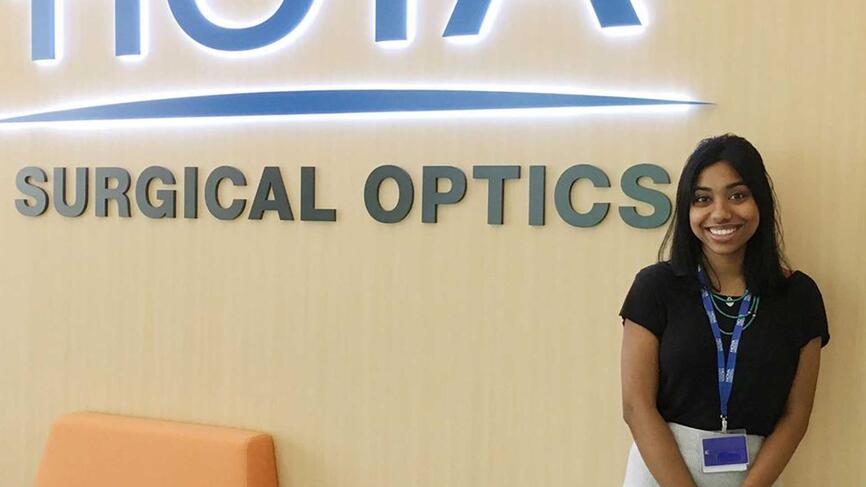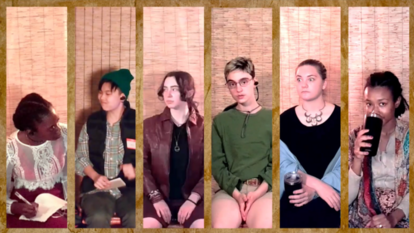Exploring Real-World Applications of Medicine Through Senior Theses
Hours in the lab and the library can feel far removed from making any real change. But in the cases of recent graduates Jana Freedman ’20 and Aditi Saha ’20, taking on a thesis wasn’t just completing a project. It was conducting research with real potential to make a difference in the world. Freedman worked on utilizing MRIs to more accurately direct cancer diagnosis and treatment planning, while Saha studied how to improve the amblyopia (commonly known as lazy eye) lab model, in order to improve vision therapy.
While following a pre-med track at Wellesley, Freedman majored in physics and minored in philosophy. She liked learning about the science of medicine, but she wanted to take it beyond the classroom and put it to good use in a real-world context: “I was dying to apply those lessons,” she said.
Classmate Saha selected courses to make her own biotech track, choosing to major in economics and physics—physics because she loved the subject and “because of its versatile and burgeoning application in biological systems,” she said.
It was through their experiences conducting research in the lab that both students saw how their classroom knowledge could make an impact on people’s health and lives.

The summer before her junior year, Freedman worked as a research assistant at the Maine Medical Center Research Institute in the Center for Molecular Medicine, which focused on the biological aspects of the body’s fight against infection and sparked her interest in cancer research. Itching for a more interdisciplinary approach and real-world applications, Freedman joined Dr. Michael Cima at the Koch Institute for Integrative Cancer Research at MIT in the summer of 2019. The project—studying implantable sensors used to plan treatments and diagnostics for cancer patients—was a great match: it combined Freedman’s interests in medicine and physics.
“This project taught me all about the physics of MRIs, which I knew little about but am now so fascinated by,” Freedman reflected. This was exactly what she had hoped to gain from the project. “It showed me how to use different aspects of science to arrive at a complete medical solution.”
Meanwhile, Saha spent three summers, from 2017 to 2019—at the National University of Singapore, Hoya Surgical Optics, and MIT’s Bear Lab, respectively—conducting research on the human eye, which set the foundation for what would become her thesis. Her senior year, she continued as an undergraduate researcher at the MIT Picower Institute of Learning and Memory. When it came time to write her thesis, she knew what she wanted to focus on. “It was less of picking a topic and more of an amalgamation of my academic and research experiences that shaped this project,” explained Saha. Years of study of the human eye had revealed just how much there was left to learn. “This is a complex and intricate system whose study can help us better understand human perception and our environment,” she said.
Both students shared that they were drawn to their topics because of their immediate potential to help people. A more accurate model of the lazy eye can help researchers treat the impairment better, and improved cancer treatment has the potential to touch many lives.

“I hope my research will improve the accuracy of the amblyopia model, accounting for its different types, as well as how exactly this common visual impairment affects human sight,” said Saha, “and that it will serve as a stepping stone for researchers studying novel amblyopia—or lazy eye—and its treatments.” Current treatments for lazy eye involve patching the dominant eye, either with a physical patch or pharmacological blurring, for two to six hours a day. But the treatment becomes less effective with patients older than 8, and almost a quarter of patients need treatment again within a year of stopping.
“This concern about the efficacy of patching treatment at older ages has fueled the exploration of alternative amblyopia treatments. However, in order to test the viability of these novel treatments, amblyopia must first be accurately modeled within a laboratory setting. This is where my thesis research came in,” explained Saha.
For Freedman, “It was truly inspiring to lead a project that would hopefully improve the treatment of specialized cancer patients.” In the lab, she made silicone formulations with various viscosities that were analyzed by the Brigham and Women’s Hospital’s MRI facility. Data from MRI scans using those formulations allowed her to “create a silicone sensor that, when implanted in a patient's tumor, would be able to detect the quantity of oxygen within the tumor cells.” Oxygen levels indicate a tumor’s malignancy, so “this silicone sensor and the ability to manipulate its sensitivity could be really helpful for diagnosing and treating different cancers,” she explained.
“This versatile method of problem-solving is what I really love about physics,” Freedman said. “I want to continue to find simple answers to difficult problems.” She plans to find another enriching project to work on before eventually working toward a PhD in physics, with the goal of making expensive medical treatments more accessible to low-income and marginalized groups.
Saha will use her understanding of physics to continue innovating in the biotech world. This summer, she’s a research associate at the Broad Institute in Cambridge, MA, working on optimizing an optical system for commercial use. After that, she hopes to work in the biotech field for a few years in order to explore different roles and get a better understanding of the industry before pursuing a graduate degree.
“Watching my thesis come to fruition has not only been a dream come true but a great culmination of my undergraduate academic experiences—both in and outside the classroom,” reflected Saha.



